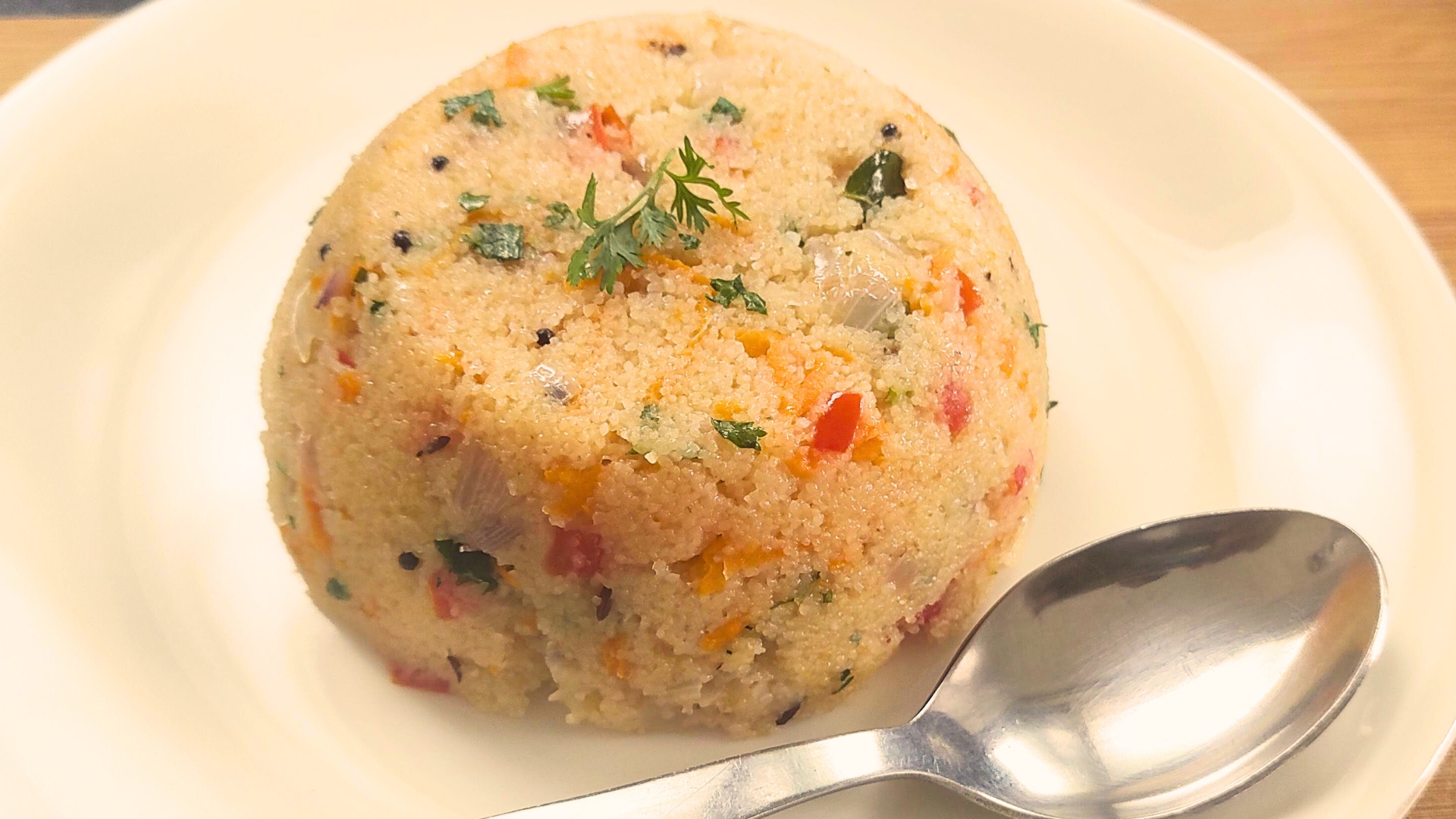1. Introduction
Upma, a popular South Indian breakfast dish, is a savory porridge made from semolina (also known as rava or suji). It is loved for its simplicity, quick preparation time, and versatility. This dish can be enriched with various vegetables and spices, making it a nutritious and satisfying meal.
Table of Contents
2. Ingredients
- 1 cup semolina (rava/suji)
- 1 tablespoons oil or ghee
- 1 teaspoon mustard seeds
- 1 teaspoon cumin seeds
- 1-2 green chilies, finely chopped
- 1 medium onion, finely chopped
- 1 tomato finely chopped
- 1-2 sprigs of curry leaves
- 1 teaspoon grated ginger
- 2-3 cups water
- Salt to taste
- 1 teaspoon sugar(optional)
- Freshly chopped coriander leaves
- Lemon juice to taste
- Optional: Mixed vegetables (carrots, peas, beans)
3. Step-by-Step Recipe
- Roast the Semolina: In a dry pan, roast the semolina on medium heat until it turns light golden brown and emits a nutty aroma. Set aside.
- Prepare the Seasoning: In a deep pan, heat oil or ghee. Add mustard seeds and let them splutter. Add cumin seeds.
- Add Aromatics: Add chopped green chilies, curry leaves. Sauté for a minute.
- Cook the Onions and Vegetables: Add chopped onions and cook until they become translucent. If using, add mixed vegetables and sauté for a few minutes until they are tender.
- Add Water and Boil: Pour in 2-3 cups of water, add salt, and bring to a boil.
- Cook the Semolina: Gradually add the roasted semolina to the boiling water, stirring continuously to avoid lumps. Reduce the heat to low.
- Simmer and Cover: Cover the pan and let it simmer for a few minutes until the water is absorbed and the upma reaches the desired consistency.
- Finish and Serve: Turn off the heat, add freshly chopped coriander leaves, and a squeeze of lemon juice. Mix well and serve hot.
4. Tips for Perfection
- Consistent Roasting: Ensure the semolina is evenly roasted to avoid raw taste.
- Avoid Lumps: Stir continuously while adding semolina to boiling water to prevent lumps.
- Right Water Ratio: Adjust the water quantity according to the desired consistency—more water for a softer upma, less for a firmer texture.
- Fresh Ingredients: Use fresh vegetables and spices for enhanced flavor.
5. Serving Suggestions
It can be served with:
- Coconut chutney
- Sambar
- Plain yogurt or curd
- Pickles
- A sprinkle of sev or fried nuts for added crunch
6. Common Mistakes to Avoid
- Not Roasting Semolina Properly: Leads to a raw taste and sticky texture.
- Incorrect Water Ratio: Too little water results in dry upma; too much makes it mushy.
- Ignoring Continuous Stirring: Causes lumps to form.
7. History and Origin
It’s origin is deeply rooted in South Indian cuisine, particularly in Tamil Nadu, Karnataka, Andhra Pradesh, and Kerala. It has been a staple breakfast dish for centuries, evolving with regional twists and variations.
8. Health Benefits
- High in Fiber: Semolina is rich in dietary fiber, promoting digestive health.
- Energy Boosting: Provides quick energy due to its carbohydrate content.
- Nutrient-Rich: Adding vegetables increases the nutritional value, providing essential vitamins and minerals.
- Low in Fat: When made with minimal oil, upma is a low-fat meal option.
9. Variations of Upma
- Vegetable: Loaded with mixed vegetables like peas, carrots, and beans.
- Tomato: Made with tomatoes for a tangy twist.
- Rice: Uses rice instead of semolina.
- Bread: Uses leftover bread pieces.
- Vermicelli: Made with vermicelli noodles instead of semolina.
10. Regional Cuisines
- Karnataka: Known as “Kharabath,” it often includes more spices and vegetables.
- Tamil Nadu: Simpler version, called “Arisi Upma” when made with rice.
- Andhra Pradesh: Spicier version with the addition of more green chilies and sometimes peanuts.
- Kerala: Often includes grated coconut for added richness.
11. Frequently Asked Questions (FAQs)
Q1: Can it be made gluten-free?
A: Yes, substitute semolina with gluten-free grains like rice, quinoa, or millet.
Q2: How can I store leftover upma?
A: Store in an airtight container in the refrigerator for up to 2 days. Reheat by adding a little water.
Q3: Can I make it in advance?
A: It is best enjoyed fresh, but you can prepare the roasted semolina and chopped vegetables in advance to save time.
Q4: Is it suitable for weight loss?
A: Yes, upma is low in calories and fat, especially when made with minimal oil and lots of vegetables.
Q5: What are some protein-rich additions to upma?
A: Adding legumes like chana dal, urad dal, and peanuts can increase the protein content.
Upma is a delightful and versatile dish, perfect for a quick breakfast or light meal. Its simplicity and adaptability make it a favorite across various regions and palates.
To know more about Upma click here.

